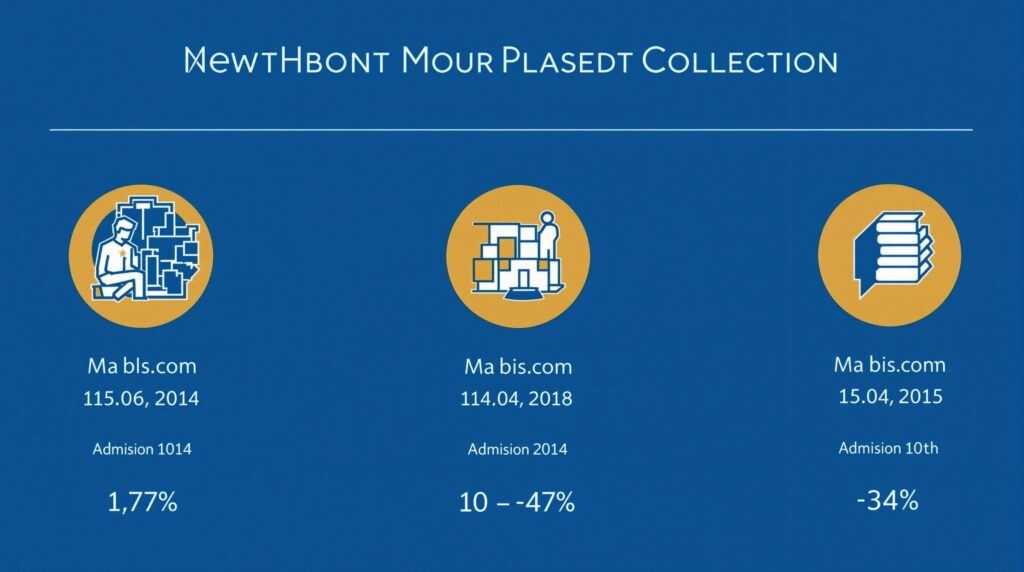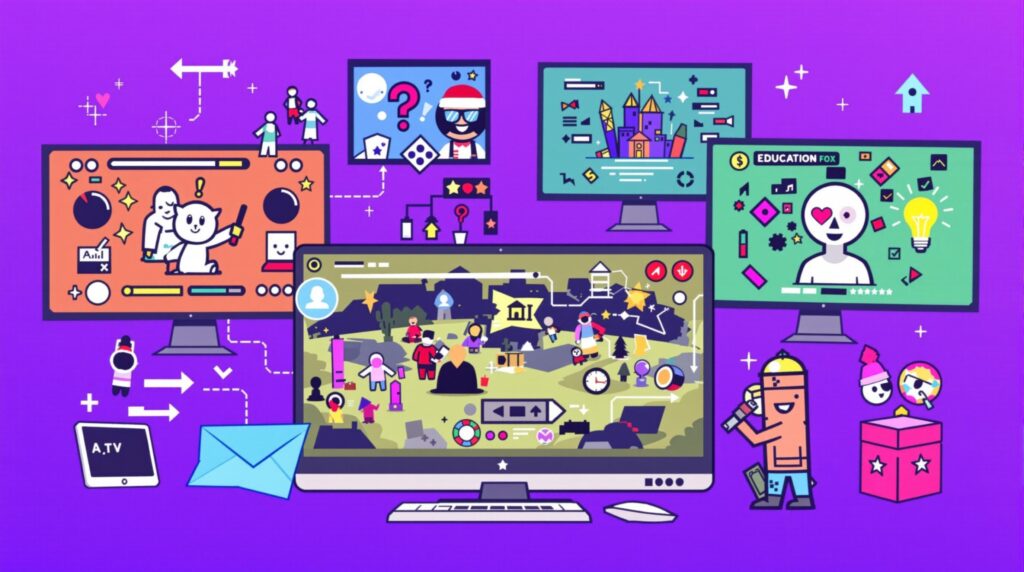Educational grants represent a powerful pathway for career advancement and academic growth, with precise funding opportunities available across various fields and experience levels. A well-crafted grant application sample can serve as an invaluable guide for navigating the application process, highlighting essential components that increase your chances of securing funding for educational initiatives.
Key Takeaways
- Federal funding covers only 13.7% of public K-12 education with significant variations across demographic groups
- Successful applications include detailed needs assessments with demographic data to justify funding requirements
- Career-specific grants like TEACH and SMART programs offer up to $4,000 annually with service commitments
- AI tools can reduce proposal drafting time by 30-50 hours while improving application quality
- Alignment between narrative and budget is critical for application success, with misalignment causing many rejections
Understanding the Educational Grant Landscape
The educational grant ecosystem presents a complex but rewarding opportunity for those seeking funding. Federal funding accounts for just 13.7% of public K-12 education funding, with per-student allocations averaging $2,536 according to recent data. This creates both challenges and opportunities for grant seekers who need to understand funding priorities.
Different funding sources show varying approval rates and focus areas. For instance, the NSF’s Directorate for STEM Education achieved a 24% overall funding rate in FY 2024, with the Equity for Excellence in STEM division reaching an impressive 40% success rate. These disparities extend to demographic groups as well, with Hispanic/Latinx students at Golden West College showing an 81% success rate compared to 64% in control groups.
For higher education, the landscape includes educational grants with specific requirements such as Pell Grants, which provide recipients an average of $4,491 annually. A striking 51% of these funds go to families earning under $20,000, highlighting the equity-focused nature of many educational grants.

Essential Components of a Winning Grant Proposal
A successful grant application includes several key components that work together to create a compelling case for funding. The cover letter serves as your first impression, where you should summarize project goals, funding needs, and qualifications. For reference, Shasta College secured a $264,211 basic needs grant with a well-crafted introductory letter that clearly stated their objectives.
The needs assessment section requires demographic data to justify educational access gaps. With 34% of undergraduates relying on Pell Grants, your application should highlight specific accessibility challenges facing your target population. This section is often where rejected applications fall short—27% of unsuccessful NSF proposals lack demographic-specific data.
Your budget breakdown must include specific allocations that directly support your stated objectives. For example, successful grant application samples often include line items like $16,504 for assistive reading systems with clear justification for each expense. This precision demonstrates fiscal responsibility and planning.
Finally, include measurable objectives that show how you’ll track success. Golden West College linked their $810 microgrants to an 83% course success rate—13% higher than control groups. This kind of concrete measurement framework makes your application more competitive by demonstrating accountability.
Career-Advancing Grant Opportunities by Field
Educational grants offer field-specific opportunities to advance your career while serving communities in need. TEACH Grants provide $4,000 annually for educators who commit to teaching in low-income schools for four years after graduation. This combines financial support with purposeful career direction.
For STEM professionals, SMART Grants offer $4,000 for juniors and seniors in exchange for post-graduation service with the Department of Homeland Security. Nursing scholarships provide even more substantial support, covering full tuition with two-year service commitments in underserved areas.
The distribution of grants varies significantly across institution types and demographics. Pell Grant averages range from $5,320 at public 4-year institutions to $5,727 at private 2-year colleges. Gender disparities are also notable, with 43% of female undergraduates receiving Pell Grants compared to 34% of males.
Industry partnerships can significantly enhance grant opportunities. Golden West College’s collaboration with state programs led to impressive outcomes for students, particularly among specific demographic groups. These national foundations offering educational grants often prioritize initiatives with strong community and industry connections.
Step-by-Step Grant Writing Process with Examples
Creating a competitive grant application begins with understanding success metrics. Shasta College maintained an 88% success rate from 2013-2023, securing $163.7 million in awards through a methodical approach to grant writing. Their process provides an excellent model for developing your application.
Start by structuring your proposal using proven templates from organizations like Kurzweil Education and Venngage. These templates help ensure you include all required sections in the proper order, which is crucial for reviewers who often evaluate dozens of applications.
Include demographic-specific data throughout your narrative to prevent rejection. As mentioned earlier, 27% of rejected NSF proposals lack this critical information. Link your narrative directly to your budget by connecting funding requests to specific outcomes—for example, showing how child nutrition funding improves academic performance.
Reference pilot program data whenever possible to strengthen your case. Golden West College demonstrated that grant recipients achieved a 2.97 GPA compared to 2.49 for non-recipients. This kind of concrete evidence makes your application more compelling and credible to reviewers.
Common Pitfalls and How to Avoid Them
Even excellent projects can fail to secure funding due to common application mistakes. Incomplete needs assessments represent a significant problem, with 27% of rejected NSF proposals lacking demographic-specific data that demonstrates genuine need. Address this by thoroughly researching your target population and including relevant statistics.
Overlooking compliance requirements is another frequent issue. About 15% of Shasta College’s applications failed due to unmet FAFSA or unit requirements. Create a compliance checklist for each grant opportunity to ensure you meet all technical specifications before submission.
Budget misalignment often leads to rejection when expenditures don’t directly connect to proposed outcomes. Every line item should clearly support your stated objectives, with no unexplained or tangential expenses that might raise questions about your financial planning.
Including success stories from similar initiatives can strengthen your application. Shasta College achieved a 100% success rate for their 2020-21 applications by focusing on measurable outcomes that demonstrated clear impact. Their grant application samples showed distinct connections between funding and specific, achievable results.
Leveraging AI Tools to Streamline Your Grant Application
Modern grant writers can utilize AI tools to improve efficiency and quality. Grantable ($20/month) centralizes existing proposals for adaptive reuse, allowing you to build on previous successful applications rather than starting from scratch each time.
Grant Assistant specializes in government and NGO proposals with built-in compliance checks that help ensure your application meets all technical requirements. For STEM grants, Claude AI ($17/month) enhances technical writing by improving clarity and precision in complex descriptions.
The efficiency gains from AI tools are substantial, reducing proposal drafting time by 30-50 hours according to recent studies. This allows you to focus more attention on strategy and customization rather than basic writing tasks.
When choosing AI tools, compare pricing models carefully. Options range from Grant Orb’s $44/application fee to ChatGPT’s free tier with more limited capabilities. Your selection should depend on your budget constraints and grant proposal requirements.
Measuring Success: Tracking and Reporting Grant Outcomes
Successful grant management extends beyond securing funds to include tracking and reporting outcomes. Use metrics like those employed by Golden West College, which demonstrated an 83% course success rate (13% higher than control groups) to show concrete impact.
Highlight both quantitative metrics (such as GPA increases from 2.49 to 2.97) and qualitative outcomes in your reporting strategy. Document demographic-specific impacts, such as an 81% success rate for Hispanic/Latinx students, to demonstrate how your program addresses equity concerns.
Create continuous improvement cycles based on data analysis to strengthen future applications. Shasta College’s approach to reporting contributed significantly to their $163.7 million in awards over a decade, as they consistently demonstrated progress and refinement in their programs.
Establish clear evaluation protocols from the beginning of your grant implementation. Defining how you’ll measure success before you start makes reporting more straightforward and provides credible evidence for renewal applications when your current funding period ends.
From Application to Implementation: Managing Your Grant Award
Once you secure funding, proper implementation becomes crucial. Document NSF’s division-specific funding requirements and create a detailed compliance strategy to ensure you meet all obligations throughout the grant period.
Create timeline-based implementation plans with measurable milestones that align with your original proposal. This helps maintain focus and provides clear checkpoints for evaluation and reporting purposes.
Establish evaluation protocols based on successful models like Golden West College’s approach. Their systematic data collection allowed them to demonstrate significant improvements in student outcomes, which strengthened their position for future funding opportunities.
Prepare for grant renewal by tracking key performance indicators from day one. Document challenges, adaptations, and successes throughout the implementation process to build a compelling case for continued support when your current grant ends.
Sources
usafacts.org – What percentage of public school funding comes from the federal government
nsf.gov – EDU Funding Rates
shastacollege.edu – Office of Grant Development Statistics
educationdata.org – Pell Grant Statistics
fundsforngos.org – How to Write a Proposal for Education Focused Grants
pgpf.org – How is K-12 Education Funded



